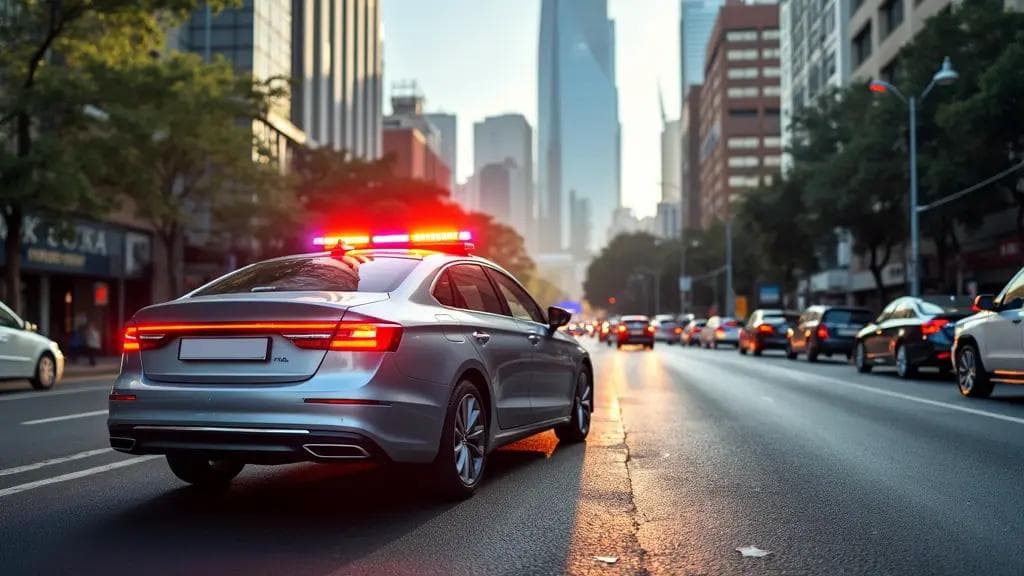10 Immediate Fails to Avoid in Your K53 Driving Test in South Africa
Many learners fail their first attempt due to common K53 driving test mistakes that are easily avoidable with proper preparation. Passing the K53 driving test is a critical milestone for earning your driver’s license in South Africa. This test evaluates not just your knowledge of road rules but also your ability to drive safely in real-world
Today, we’ll break down the most frequent errors including immediate fails like poor observation and rolling stops and share practical tips to help you pass your K53 driver’s test on the first try.
1. Inadequate Observation (An Immediate Fail)
Observation is a cornerstone of the K53 test. Examiners will assess how thoroughly you check mirrors, blind spots, and intersections. Failing to observe properly is an immediate fail.
How to avoid this:
- Check rearview and side mirrors every 5-8 seconds and before maneuvers.
- Scan blind spots before changing lanes, turning, or pulling off.
- At intersections, look left, right, and left again—even if the road seems clear.
2. Poor Steering Control
Another common error is poor steering control. This includes holding the steering wheel incorrectly, making jerky or overly sharp turns, or not keeping your hands at the correct position on the wheel. Poor steering control can be a sign that you are not fully in control of the vehicle.
How to avoid this:
- Use the '9 and 3' hand position on the steering wheel, which offers the best control.
- Practice smooth, controlled turns, and avoid oversteering or understeering.
- Make sure you don’t cross your arms while turning, as this is often considered unsafe.
3. Ignoring Road Signs (Instant Fail)
Road signs are there to guide you, and failing to follow them during your test can result in immediate failure. This could include missing stop signs, driving too fast in a speed limit zone, or not yielding when required.
How to avoid this:
- Stay alert and pay close attention to all road signs.
- Make sure to fully stop at stop signs and yield to other road users where necessary.
- Stick to the speed limit and adjust your speed according to road conditions.
4. Rolling Stops (Instant Fail)
Rolling through a stop sign or intersection will cost you. Rolling through a stop sign or intersection is a common mistake many learners make. In the K53 test, you must come to a complete stop and only proceed when it is safe to do so.
How to avoid this:
- Practice coming to a full stop where your vehicle comes to a complete halt.
- Always pause and look around for pedestrians, cyclists, or other vehicles before moving.
5. Inconsistent Use of Indicators
Indicators communicate your intentions. Skipping them confuses others. Indicators are essential for communicating with other drivers on the road. Whether you are turning, changing lanes, or stopping, failing to indicate can confuse other road users and lead to accidents.
How to avoid this:
- Always indicate in advance before making any turn or lane change.
- Ensure your indicators are working properly before the test.
- Cancel your indicators after completing a turn.
6. Stalling the Vehicle
For learners using a manual car, stalling is a common issue, especially during hill starts or when driving in heavy traffic. Stalling during the K53 test can show a lack of vehicle control and may result in points being deducted or even failure.
How to avoid this:
- Practice smooth clutch control to avoid stalling.
- Get comfortable with pulling off on hills by practicing the handbrake method.
- Take your time and stay calm. Panic can cause more frequent stalls.
7. Incorrect Lane Usage
Using the wrong lane or failing to stay in your lane is another frequent mistake. For example, entering a turn from the incorrect lane or driving too close to the lane markers can result in failing the test.
How to avoid this:
- Practice lane discipline by staying in your designated lane.
- Signal early before changing lanes and ensure that it’s safe to move.
- Keep a safe distance from the lane markings and other vehicles.
8. Parallel Parking Mistakes
Parallel parking is a top challenge for learners. Hitting the curb or misaligning your car costs points.
How to avoid this:
- Practice your parking maneuvers repeatedly until you are confident.
- Use your mirrors and blind spots to ensure your vehicle is properly aligned.
- Take it slow, and don’t rush the parking process.
9. Overconfidence or Nervousness
Both overconfidence and nervousness can negatively affect your performance in the K53 test. Overconfidence may lead to careless mistakes, while nervousness can cause you to second-guess yourself or rush through important steps.
How to avoid this:
- Prepare thoroughly before the test so that you feel confident but not overconfident.
- Take deep breaths and remain calm throughout the test.
- Focus on driving safely and following the rules of the road, rather than worrying about passing or failing.
If nerves or overconfidence led to a failed test, don’t worry! Many learners pass after gaining more practice and improving in areas where they struggled. Learn more about what to do after failing your test in our guide on What to Do If You Fail Your Driving Test.
10. Failing to Follow the Examiner’s Instructions
During the test, your examiner will give you instructions on where to go and what to do. Not following these instructions properly or misunderstanding them can result in a loss of marks.
How to avoid this:
- Listen carefully to the examiner’s instructions.
- If you are unsure about something, ask for clarification. It's better to ask than to make a wrong move.
- Stay focused and don’t let nerves distract you from understanding what the examiner is saying.
Final Thoughts
Passing the K53 driving test requires careful preparation and an understanding of common mistakes to avoid.
By practicing regularly, staying calm, and paying attention to details such as observation, steering control, and following road signs, you can increase your chances of success.



